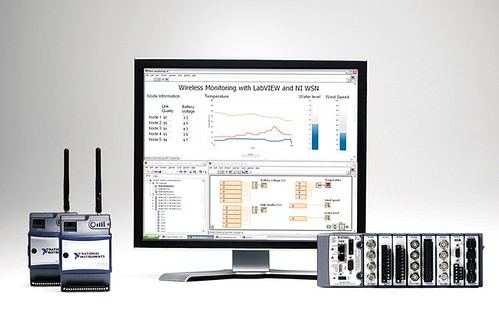What is LabVIEW used for and What are 4 purposes ?
LabVIEW, short for Laboratory Virtual Instrument Engineering Workbench, is a versatile software development environment crafted by National Instruments. Initially designed for data acquisition from laboratory instruments, LabVIEW has transcended its origins to become a multifaceted tool with diverse applications across industries.
Automated Manufacturing Test: Streamlining Production Processes
LabVIEW serves as a pivotal tool in the domain of automated manufacturing tests. Whether assessing a component, sub-system, or complete system, LabVIEW offers a seamless solution for ensuring quality and efficiency in production lines. By automating tests, manufacturers can significantly enhance productivity and accuracy, ultimately leading to improved outcomes.
Automated Product Design Validation: Enhancing Product Development
In product design, validation is paramount to ensure functionality and reliability. LabVIEW facilitates automated product design validation across various stages of development. From assessing individual components to validating entire systems, LabVIEW streamlines the validation process, enabling engineers to iterate designs efficiently and expedite time-to-market.
Control and Monitoring in Industrial Settings: Optimizing Operations
The versatility of LabVIEW extends to the realm of industrial control and monitoring. Whether it’s overseeing machinery, industrial equipment, or processes, LabVIEW provides robust solutions for real-time control and monitoring. By leveraging LabVIEW, industries can optimize operations, enhance safety, and maximize efficiency in diverse industrial settings.
Condition Monitoring: Proactive Maintenance for Enhanced Performance
Condition monitoring is essential for maintaining peak performance and preventing costly downtimes. LabVIEW offers advanced capabilities for monitoring the condition of machinery and industrial equipment in real-time. By detecting anomalies and predicting potential failures, LabVIEW empowers organizations to implement proactive maintenance strategies, ensuring uninterrupted operations and minimizing downtime.
Unraveling the Depths of LabVIEW: Insights and Applications
While the aforementioned applications cover a broad spectrum of use cases, the versatility of LabVIEW transcends conventional boundaries. With its intuitive graphical interface and robust functionality, LabVIEW continues to evolve, addressing emerging challenges across industries.
A Brief Overview of LabVIEW: From Its Origins to Modern Applications
LabVIEW, developed by National Instruments, initially focused on data acquisition from laboratory instruments. However, its evolution has been remarkable, expanding far beyond its original scope. Contrary to common misconceptions, LabVIEW is not merely a programming language but a comprehensive development environment.
Unveiling the Graphical Interface: Simplifying Development
At the core of LabVIEW lies its graphical programming paradigm. Unlike traditional text-based languages, LabVIEW employs a visual approach where users assemble blocks and establish connections in a data flow architecture. This graphical interface simplifies the development process, enabling users to conceptualize and implement solutions with unprecedented ease.
The Evolution of LabVIEW: From “G” Language to Industry Standard
While LabVIEW’s programming language is officially termed “G,” it has become synonymous with the LabVIEW environment. Over the years, LabVIEW has emerged as a cornerstone in automated testing, setting the standard for efficiency and reliability in the industry. Moreover, its recent integration into industrial embedded systems underscores its adaptability and relevance in modern applications.
In conclusion, LabVIEW stands as a testament to innovation in software development. Its versatility, coupled with its intuitive interface, makes it a preferred choice for a myriad of applications ranging from automated testing to industrial control. As industries continue to evolve, LabVIEW remains at the forefront, empowering engineers and organizations to realize their full potential.

